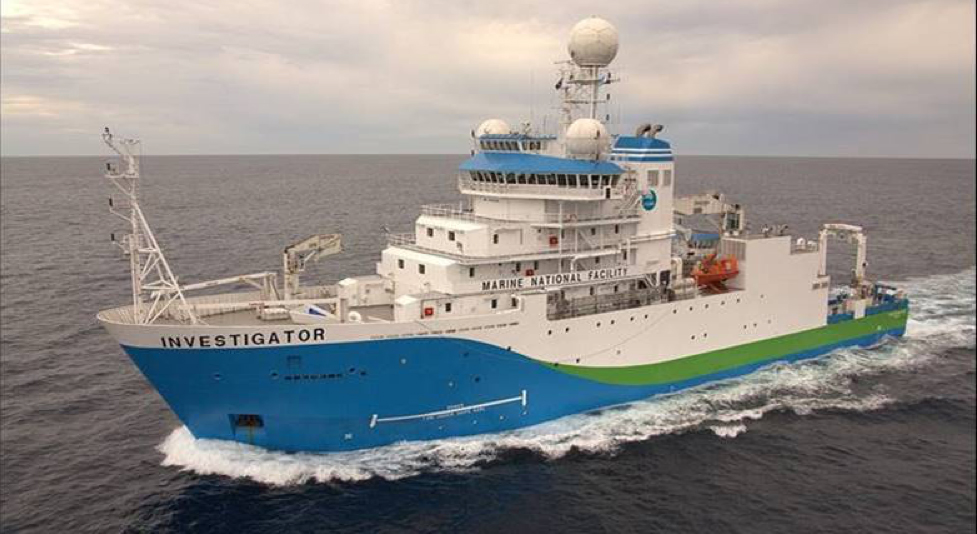Australian Research Vessel – RV Investigator – Ship of the Week Feb 9, 2017 | West Pacific Marine
RV Investigator is an Australian marine research vessel which was designed by RALion (a joint venture between Robert Allan Ltd. and Alion Science and Technology). She was constructed in Singapore and is owned and managed by the Commonwealth Scientific and Industrial Research Organisation (CSIRO), through Australia’s Marine National Facility with its operations funded by the Australian Government to undertake oceanographic, geoscience, ecosystem and fisheries research.
Built by Sambewang Shipyard, Singapore
Owned by the Commonwealth Scientific and Industrial Research Organization (CSIRO)
Operated by ASP Ship Management Pty. Ltd.
Delivered in 2014
LOA 93.9m
Beam 18.5m
GRT 6082 tons
DWT 1537 MT
Propulsion: Diesel-Electric, 2 x fixed pitch propellers | Propulsion Motors: 2 x L3 AC reversible propulsion motors rated at 2600 kW minimum each
Rudders: 2 x independently vectoring Becker high lift | Steering Gear: 2 x rotary vane units
Dynamic Positioning: Kongsberg K-Pos – DP1 (AM) which allows the vessel to hold station within defined limits
Cruising speed 12 knots
Drop Keels: 2 x drop keels with instrumentation mounting extendable to 4m below the keel
Accommodation for up to 40 research staff and 20 crew
Classification Lloyds +100A1, +LMC Research Vessel, DP (AM) UMS, ICE 1C, IWS, SPS Code & DNV Silent-R
Home port: Hobart, State of Tasmania
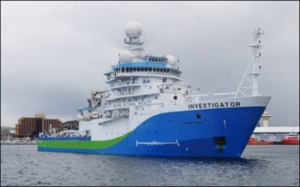
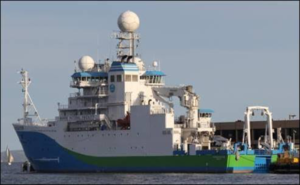
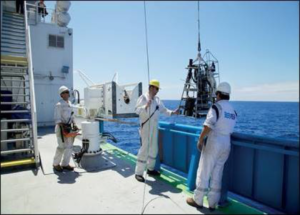
The history of Investigator goes back to 2009 when the Australian Government allocated A$120 million for a new ocean-going research vessel to replace the 1972 built RV Southern Surveyor. She is able to accommodate up to 40 scientists, for up to 60 days at sea at a time. Special features of the ship are a “gondola”, similar to a winged keel, mounted 1.2 m below the hull, and two drop keels which can be lowered to a maximum of 4m below the hull to carry scientific instruments below the layer of microbubbles created by the movement of the ship’s hull through the water. Such instrumentation includes acoustic mappers and a pelagic sediment profiler to produce maps of the sea floor. The hull and the machinery of the ship have been designed to operate as quietly as possible to enhance its scientific capabilities. The vessel is able to map the ocean floor to any depth, search for resources, better understand fisheries, collect weather data 20km into the atmosphere and much more.
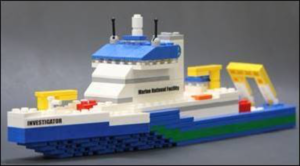
The history of the vessel’s management company goes back to 1991 when Australian National Line and Associated Steamships formed a joint venture, which saw the beginnings of ASP Ship Management. Today, the company is a globally engaged Ship Manager and Maritime Service Solutions provider with offices in Europe, the Indian Sub-Continent, Asia and Australasia.

